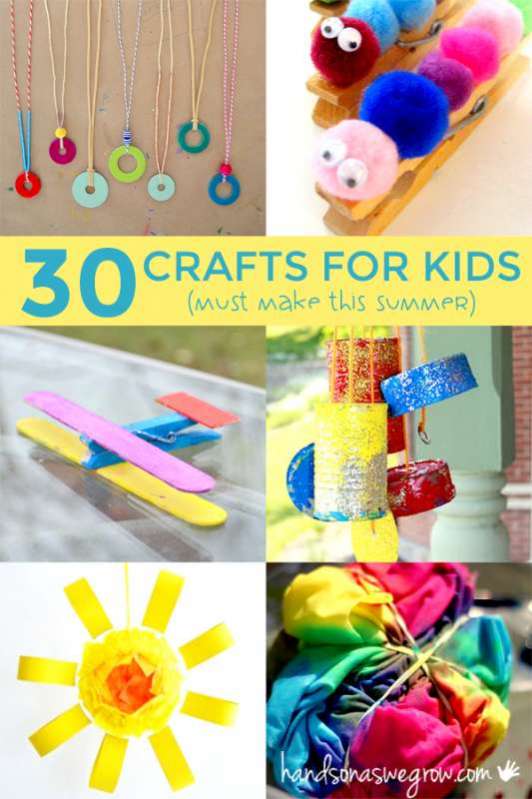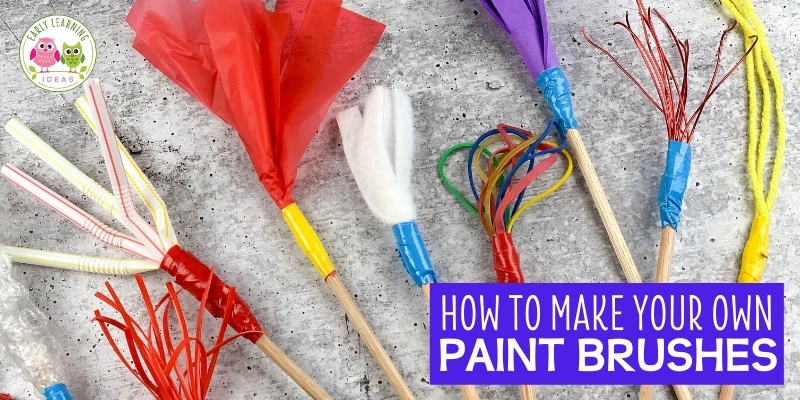Featuring nickel plated ferrules with fine finish, the Chenille Kraft Preschool Brush Set is durable enough to let you paint for years. This 24-piece paint brush set contains 12 round and 12 flat brushes for all kinds of painting techniques. These brushes are perfect for Tempera paint. Melissa & Doug Medium Paint Brush Set I bought this set for my 2-1/2 year old grandson. He is very pleased with them and judging by the masterpieces he bestows upon me I can honestly say that they are perfect. They are the right size, easy to clean, and hold the paint well. These brushes can also be used by an older child as well as a pre schooler. The Creativity Street Pre-School Brush Set is a paint brush specifically designed to fit little hands. Perfect for tempera paint, these brushes are made with natural hog bristles, seamless nickel-plated ferrules and hardwood handles with a clear finish. The set includes 12 flat (#1 to. In the free printable paint brush template download you'll receive three pages: A page. Apr 8, 2015 - Here is a cute printable paint brush template download you can use for your crafts and projects. In the free printable paint brush template download you'll receive three pages: A page. Paint Brushes for Kids, 8 Pcs Big Washable Chubby Toddler Paint Brushes, Easy to Clean & Grip Round and Flat Preschool Paint Brushes with No Shed Hog Bristle for Acrylic Paint, Washable Paint. 4.3 out of 5 stars.

Are you looking for ways to add some excitement to your art center? Why not make your own paint brush. Experimenting with different materials and methods for making paintbrushes is a great STEAM activity for young kids.
Here are some ideas for DIY paintbrushes to get you started.
Make Paint Brushes from Nature
The variety of DIY paintbrushes that you can make from natural materials for your preschool art activities is endless. Let your kids help you come up with some ideas.
Sticks, Straw, herbs or Grass
Melissa And Doug Paint Brushes
Bundle some natural materials together with a rubber band or tape and dip them into the paint.
Tree Branches
Evergreen trees are an excellent choice for paint brushes, but you experiment with other tree branches. I attached this evergreen sprig to a small dowel to protect our fingers from the pokey branches.
Flowers
A single flower or a bundle of them will create some exciting designs
Feathers
I recommend that you use feathers from a craft store instead of feathers that you find in the yard. You can purchase feathers that have a more natural appearance, but the brightly colored ones are fun to use as well. Painting with feathers is one of my favorite techniques.
Make Paint Brushes from Craft Supplies
You can stick a variety of things to a small dowel rod or to a pencil to create an interesting paintbrush. Good masking tape or thin duct tape works well to attach the materials.
Straws
Bendy straws work the best for making paint brushes. Cut them off and attach them to a dowel. Kids can bend them in all different directions before they start painting.
Yarn
Experiment with different lengths of yarn, different quantities of strands, and yarn of different varieties. Long pieces of yarn attached to a stick created some of my favorite effects with the paint.
Ribbon & Bubble Wrap
There are soooo many different varieties of ribbons out there. Try out some thin ribbon, mesh ribbon, curling ribbon, wired ribbon, wide, and thin ribbon.
Here, we used the plastic lacing ribbon that used for beaded necklaces. Plus, we tried out some bubble wrap too.

Strips of Fabric or Craft Foam
You can experiment with strips of fleece, denim, cotton, tulle, felt, etc. Craft foam is a little bit more resistant than fabric or ribbon, but it creates some nice effects.
Pipe Cleaners
Here is another fun and flexible material that you can use. Experiment with the length of the pipe cleaners and with how you bend them (swirls vs zigzags etc.)
Wire & Plastic Tablecloths
Like pipe cleaners, you may be able to bend wire for different effects. How do the strokes from a wire paintbrush look different than the strokes from a pipe cleaner paintbrush?
Try out some plastic from your recycling bin or cut strips from a plastic table cloth.
Silk Flowers
Much like real flowers, you can make paintbrushes with silk flowers as well.
Rubber Bands
Of all of the homemade paintbrushes that we tried, my favorite is the rubberband paintbrush. So Much Fun!
Preschool Paint Brushes Transparent
Make Paint Brushes with Clothespin Clips
Kids Paint Brushes Bulk
You can also use a clothespin clip to make paintbrushes. The best thing about this type of brush is that it is also a great fine motor activity.
Kids can attach a clothespin clip to a small sponge and use that as a paintbrush.
Or you can provide a variety of materials so that kids can experiment with all of them.
What Kind of Paint Brush Are You Going to Make?
I hope that I gave you a little bit of creative inspiration and encouraged you to try out some fun homemade paint brushes with your kids. Let me know which type is your favorite.
Creative Resource from the Store
If you like doing creative activities with your kids, you will also like my Maker Mat Resources in the store. Click on the images below to check them out.
The art easel is a staple in most preschool classrooms. Our students love ours, but the truth is — it is a lot of work to keep up with that thing!
At the beginning of the year, we always start with crayons or colored pencils at the easel. By this time in October, though, they are ready to free paint. The creativity that preschoolers exhibit when given a blank canvas, some paint and brushes, and plenty of time is amazing. The mess and chaos that often ensues in the process is equally amazing. Here are a few tricks that we have learned over the years to maintain our sanity!
Stack the blank paper! One day I was helping a little artist move her painting from the easel to the clothesline to dry, and when I turned around another friend had painted all over the empty easel. To prevent this from happening, we stack the blank paper. When we remove one work of art, another sheet of paper is already waiting for the next artist!
Use binder rings to make the smocks easy to hang. We have smocks hanging on the end of our art easel as well as on the bathroom door adjacent to the easel. Our students are really good about remembering to wear the smock when they paint, but they are not as good about hanging it up when they are done. Part of the problem is that the smocks are tricky to hang on the hooks. We added a metal binder ring to each one, and that has made it much easier. We still find smocks that have been left on the floor, but for the most part the rings help the kids hang them up when they’re done.
Use a shower curtain to protect the wall! PreKinders posted a great idea about protecting the art easel with a shower curtain. It is a terrific idea, but I’m afraid our art easel is too far gone! I should have found that tip 10 years ago. 🙂 Instead, we added a shower curtain to the wall next to the easel. In their flurry of creativity, paint often lands on the wall. Many paintings are so thick with paint that it will drip off the paper when we hang them. This shower curtain solved our problems. (Plus, it looks so cool with the wall color, don’t you think?!)
Line the paint cups. We use spill-proof paint cups from Lakeshore and love them! Before we figured out this little trick with the baggies, though, we hated to clean them out… soak, rinse, soak, scrub, soak… Ugh. It is so much easier to place a sandwich bag in each cup before adding the paint. When it’s time to change them, we discard the bag and fill it up again. Quick and easy.

Model, practice, and repeat. It takes a lot of modeling and practice to make the routine at the art easel a smooth one. Students have to learn to only paint on their own paper (unless they decide with a friend to work together). They have to remember to write their name on the paper or ask a teacher to do it. We also ask them to find a teacher when they are finished to hang the picture to dry. If they forget to do this last step, we will sometimes have other kids come over and paint on top of the picture. Yikes. We practice these routines with crayons at the beginning so that when we add the excitement of paint, they are ready to roll.
Do you have an art easel in your classroom? What are your tricks for utilizing that center?
Have fun playing and learning with your children today!
Find LOTS of Art inspiration and ideas HERE:
